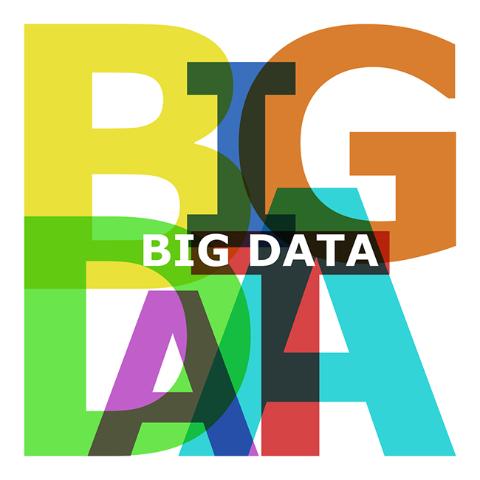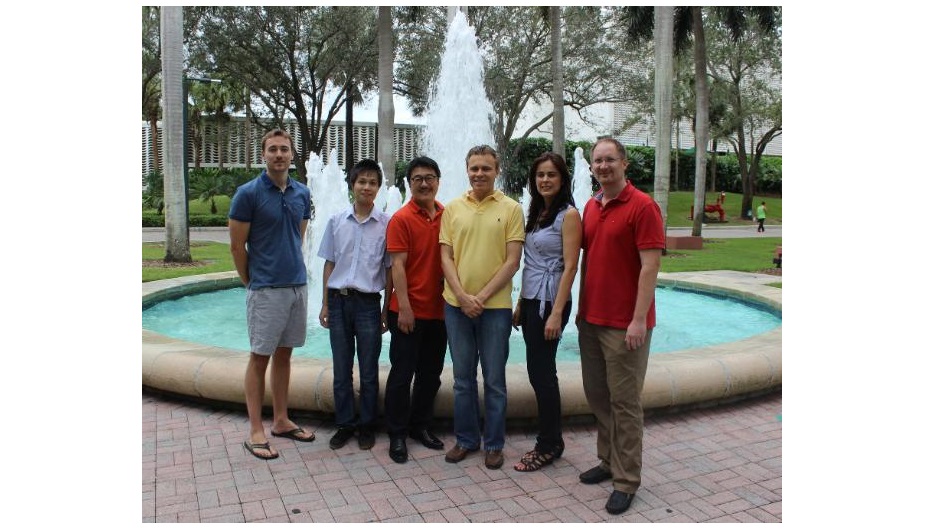Imagine you travel in a hot air balloon above the University of Miami Coral Gables campus. You float above Lake Osceola, the Donna E. Shalala Student Center, the Foote Green, the Richter Library, the Rock, the Lowe Art Museum, the Newman Alumni Center, the residential halls, and the Bill Cosford Cinema. What kind of activity would you see from above? What type of data can you collect about how the University works from just watching people move around the campus on any given day? Is there a pattern in the data, and how can that “big data” help you understand the everyday life of the University?
College of Arts & Sciences Physics Professor Dr. Neil Johnson explains: “If you only decide to collect the average number of people who were at the University on a given day, you could certainly get ‘big data’ by collecting it every day for 20 years. But the trouble is, you would be nowhere nearer to understanding what really makes life at UM tick.”
 |
“However,” he continues, “if you start to have information on the individual movement of objects, for example, and you notice 30 people suddenly aggregating around one classroom – they go in and come out – you begin to build a picture of what is going on inside that system, and that higher resolution information can lead to all sorts of new understandings.”
The term “big data” refers to enormously large amounts of data that can be collected and analyzed to reveal potential patterns or trends in social, biological, medical, chemical, and even psychological systems. “If you collect information about individual proteins or cells in our bodies, you are going to get a big batch of data. This data is big in volume and also big in resolution. The key is not the collection of data on an average scale, but gathering data in real-time – looking at cell function, the brain, or even individual investment behavior in real-time rather than averaged over a month,” said Dr. Johnson.
To build and expand the big data collection and complexity science research already occurring at the College by Dr. Neil Johnson and his colleagues, computer science professor Dr. Mitsunori Ogihara and biology professor Akira Chiba, Dean of the College of Arts & Sciences Leonidas Bachas initiated a cluster hire to recruit scholars from different specialties to work together in the field of complexity science research.
 |
As a result of the cluster hire, the College welcomed new faculty members Dr. Chaoming Song in the Department of Physics, Dr. Stefan Wuchty in the Department of Computer Science, and Dr. J. David Van Dyken in the Department of Biology, along with Dr. Elvira Maria Restrepo who joined the Department of Geography and Regional Studies and studies complexity science as it relates to conflicts.
“I’m a biologist, so I understand the parts that go into biological systems and some of the conceptual frameworks that help us understand these biological systems, but in order to do something with all of the data, it’s nice to have someone from computer science to interact with because they can write computer programs to analyze the data, and the physicists can help us with mathematical models to help us make predictions about what goes on in these systems,” said Dr. Van Dyken. “The idea is that we all have similar goals, and each of us has different expertise and different tools, and by interacting we can get a better picture of what is going on.”
As planned, the cluster hire allowed the team to collaborate with various departments and schools at the University on diverse research projects – from Dr. Van Dyken’s lab using yeast to study the genetic, cellular, and evolutionary causes of disease to the Psychology and Physics departments collecting data of the movements of children in free play, and then gathering additional neurological data about them using a functional magnetic resonance imaging (fMRI) scanner.
“In the age of big data collection and complexity science, it is important that the College of Arts & Sciences is at the forefront of collaborative research that bridges several departments connecting scholars from diverse backgrounds,” said Dean Bachas. “Our team of researchers is recognized among the best complexity scientists in the United States, and their expertise sets an example to our students that interdisciplinary work creates strong connections across many fields.”
Other interesting and notable research projects include finding complex patterns related to sudden cardiac arrest and the growth of cancer tumors, and the collection of conflict data on wars and insurgencies to find how these incidents happened on a day-by-day, event-by-event scale. Currently, Dr. Ogihara and Dr. Wuchty are working together on a project looking for the “birth of creative integration ” in research papers. They are using a form of computational analysis, known as topic modeling, to study the content of the research papers and locate identifying hidden combinations of words to find single or multiple topics. By using this technique, based on their study, one can predict if a research paper will be influential and popular, or if used in other domains for example, says Dr. Ogihara, could predict if a song will be a big hit.
“The idea of complexity [research] is all about understanding the underlying patterns so that you can create a model that would allow you to create predictions,” said Dr. Wuchty. “It’s a framework on how to think about a problem outside the box, and always expecting the unexpected.”
November 24, 2015

